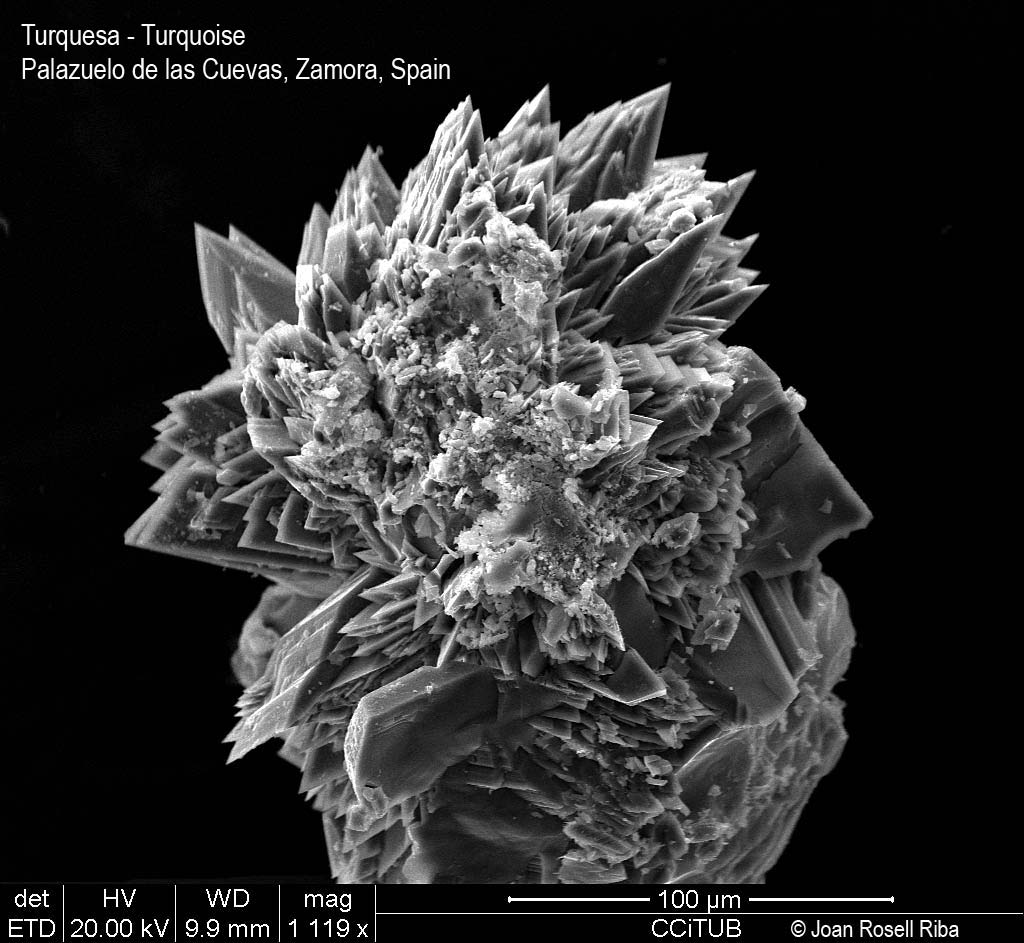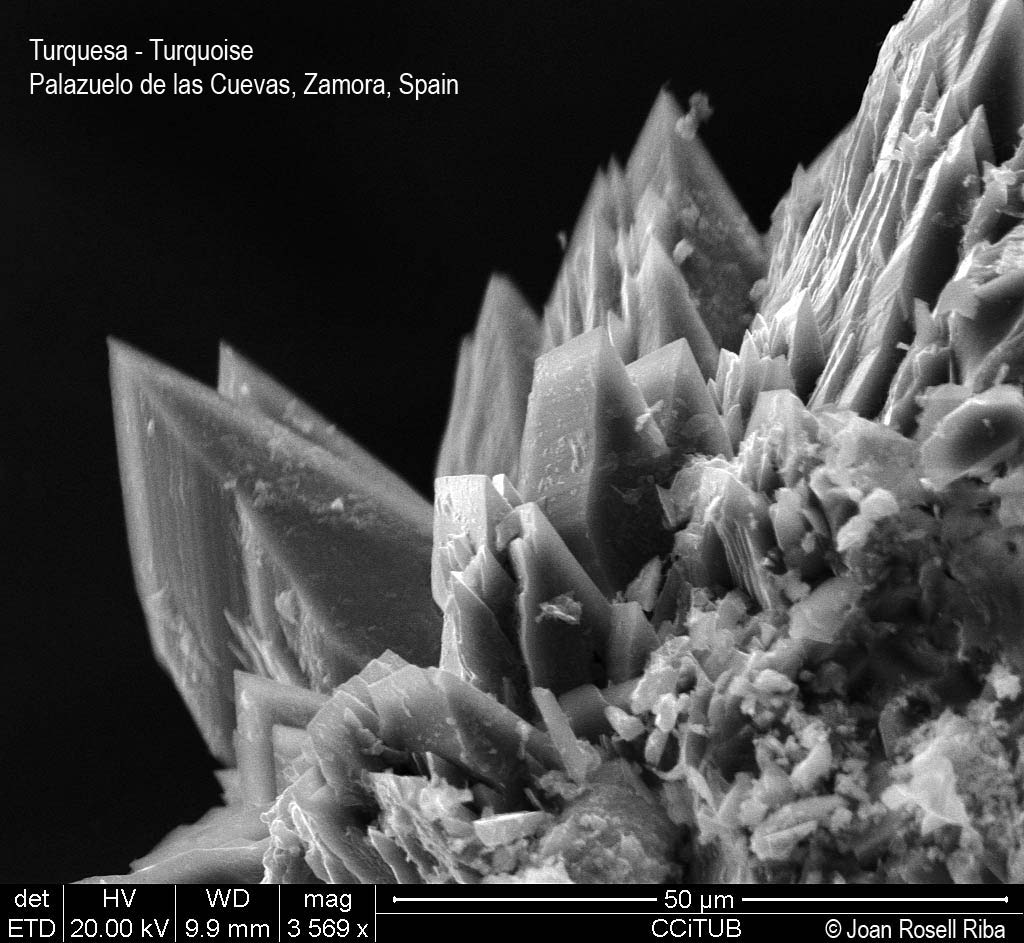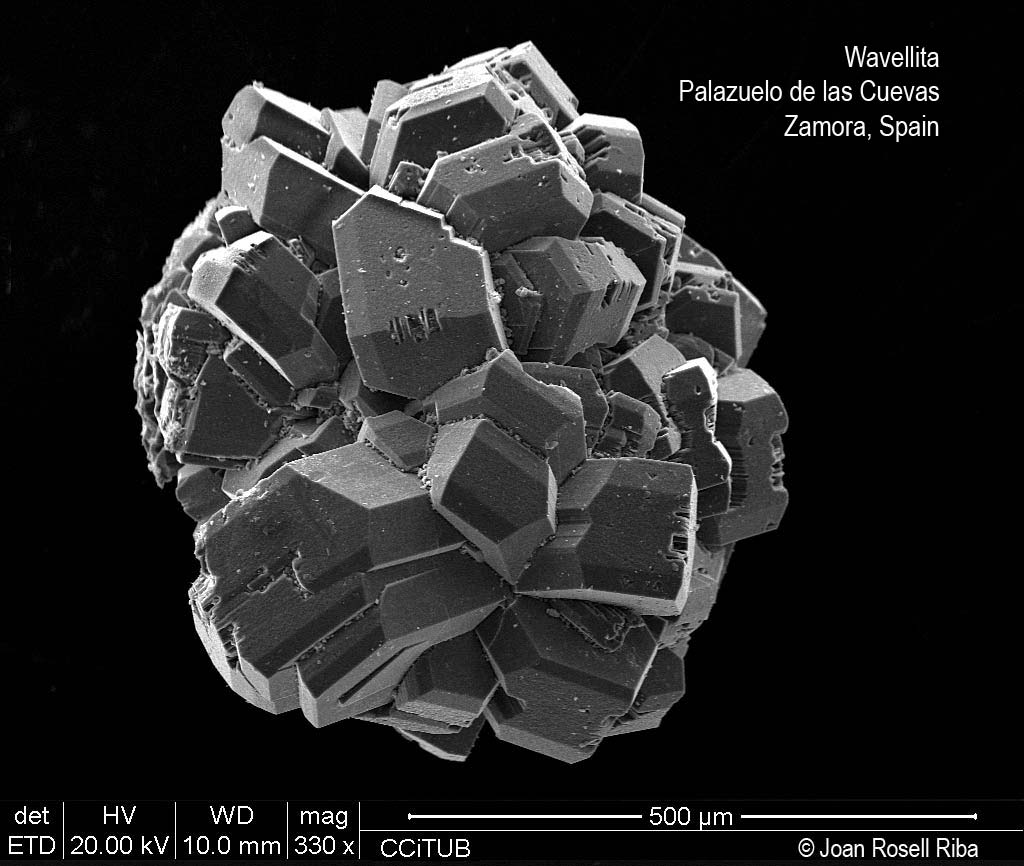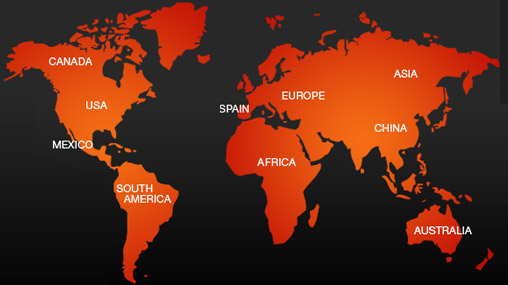- Home About RM Minerals
- Virtual Photo Museum Blog RM Contact
- Microscopy and instruments How to Buy Disclaimer
Copyright 2010-2024
www.rosellminerals.com

Classic specimen from this Zamora mine, rare to see today, formed by a layer of greenish-yellow segnitite crystals; under the magnifying glass we can see small crystals. It is accompanied by phillipsbornite and hinsdalite, of a more brownish to reddish tone. Good size specimen from this classic Spanish locality.
Specimen formed by a large group of aggregated nodules of variscite with concentric growths and apple green color. They are enclosed in a matrix with limonite. We can see the concentric structures in the natural fracture. Since its discovery in 1970, the Palazuelo de las Cuevas deposit became the "source" of variscite for the NW of the Iberian peninsula.
Specimen formed by a large group of aggregated nodules of variscite with concentric growths and apple green color. They are enclosed in a matrix with limonite. We can see the concentric structures in the natural fracture. Since its discovery in 1970, the Palazuelo de las Cuevas deposit became the "source" of variscite for the NW of the Iberian peninsula.
Specimen formed by a large group of aggregated nodules of variscite with concentric growths and apple green color. They are enclosed in a matrix with limonite. We can see the concentric structures in the natural fracture. Since its discovery in 1970, the Palazuelo de las Cuevas deposit became the "source" of variscite for the NW of the Iberian peninsula.
Among the Spanish collectors, the Zamoran opals are well known. This specimen were collected from an area from which to obtain pieces with this quality and size is very difficult, I can certify it... This specimen presents opal nodules, with an intense orange color, some brilliance and surrounded by a solid matrix. I say this because, despite the visible fractures, stability is assured. A sample of quality for this locality.
Among the Spanish collectors, the Zamoran opals are well known. This specimen were collected from an area from which to obtain pieces with this quality and size is very difficult, I can certify it... This specimen presents opal nodules, with an intense orange color, some brilliance and surrounded by a solid matrix. I say this because, despite the visible fractures, stability is assured. A sample of quality for this locality.
In this specimen we can see some matrix cavities covered by botryoidal aggregates formed by wavellite crystals. Different layers of wavellite are observed. Its color is greenish yellow and more bluish in some areas by the presence of turquoise. They are partially covered by several small aggregates of lanceolate turquoise crystals (see photo) with a light blue color.
These wavellite and turquoise specimens have been analyzed by microprobe and we will send the results to the purchaser, with the SEM photograph of both species. Palazuelo de las Cuevas area is known worldwide for variscite, that were worked for making beads in the Neolithic period, it was 5.000 years ago.

In this specimen we can see some matrix cavities covered by botryoidal aggregates formed by wavellite crystals. Different layers of wavellite are observed. Its color is greenish yellow. They are peppered by small aggregates of turquoise crystals with a light blue color.
These wavellite and turquoise specimens have been analyzed by microprobe and we will send the results to the purchaser, with the SEM photograph of both species. Palazuelo de las Cuevas area is known worldwide for variscite, that were worked for making beads in the Neolithic period, it was 5.000 years ago.

In this specimen we can see some matrix cavities covered by botryoidal aggregates formed by wavellite crystals. Different layers of wavellite are observed. Its color is greenish yellow and more bluish in some areas by the presence of turquoise. They are partially covered by several small aggregates of lanceolate turquoise crystals (see photo) with a light blue color.
These wavellite and turquoise specimens have been analyzed by microprobe and we will send the results to the purchaser, with the SEM photograph of both species. Palazuelo de las Cuevas area is known worldwide for variscite, that were worked for making beads in the Neolithic period, it was 5.000 years ago.

A very brilliant specimen of wavellite from the classic and historic locality of Palazuelo de las Cuevas, famous for the variscite. In this specimen we can observe perfectly banded wavellite aggregates formed by radiated crystals. The color varies between greenish yellow to deep green. We can see the terminal faces of the wavellite crystals in these aggregates. This sample is from a recent find and it has a quality not seen for a long time. We will send the analysis to the buyer.

In this double specimen we did not want to separate the two parts because symmetry gives them a very nice aesthetic touch. We can observe nodular aggregates of variscite. The green color is very intense. They are embedded in a type of silicified breccia matrix with iron oxides. Both are polished in the front side (which allows us enjoy the structures) and natural cut in the back side. To find samples of this quality you must go back to the past times.
In this double specimen we did not want to separate the two parts because symmetry gives them a very nice aesthetic touch. We can observe nodular aggregates and possible tigmatic folds in the veins of variscite. These meandering folds are caused by the flow of a viscous fluid into a more fluid media. The green color is very intense and it is combined with whitish and yellowish areas. They are embedded in a type of silicified breccia matrix. Polished in the front side (which allows us enjoy the structures) and natural cut in the back side. To find samples of this quality you must go back to the past times.
Specimen formed by nodular variscite aggregates showing concentric growths and intense apple green. They are embedded in a breccia matrix with limonite. It is polished on front side, necessary to enjoy structures, and natural on back side. To find specimens of this quality you must go back to the past.
Group of nodular variscite showing concentric growth and intense apple green color. They are embedded in kind of silicified breccia matrix. It is polished on front side, necessary to enjoy structures, and natural on back side. To find specimens of this quality you must go back to the past times.
